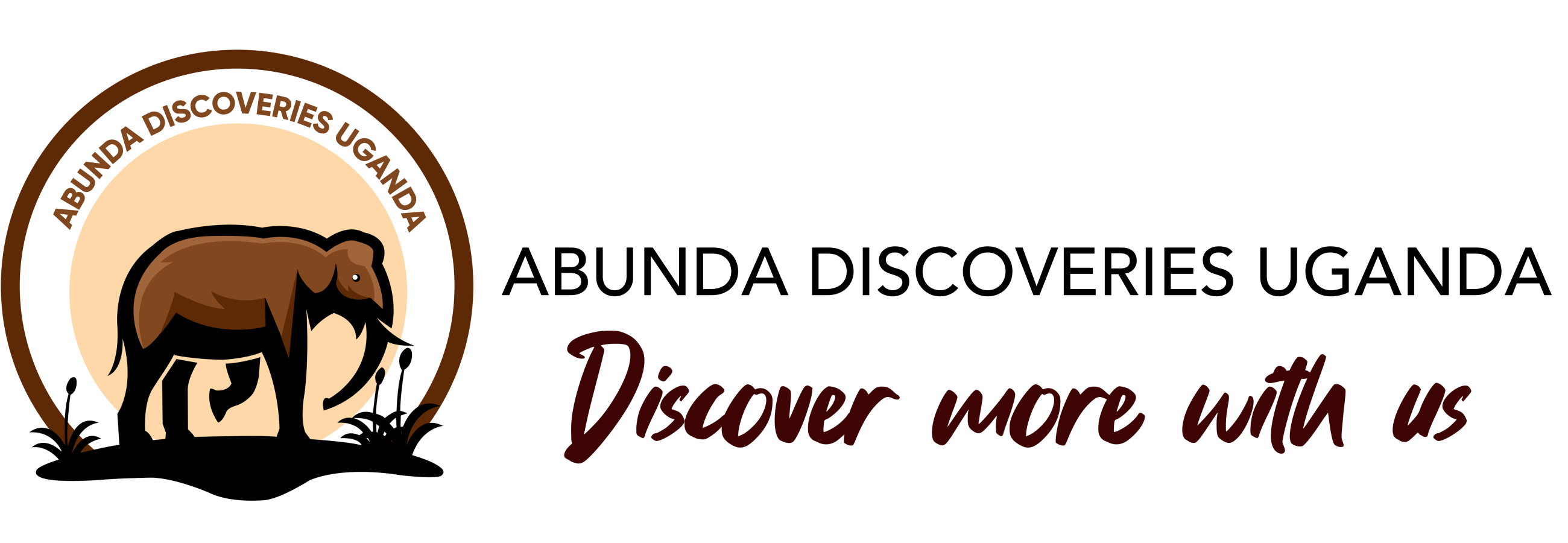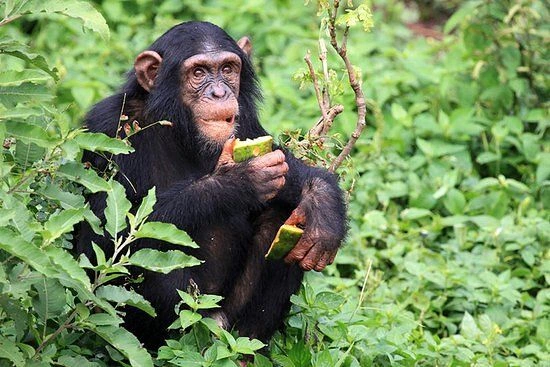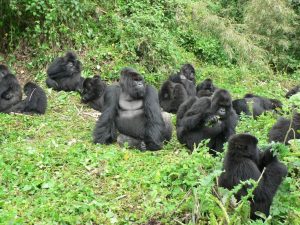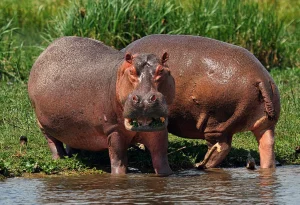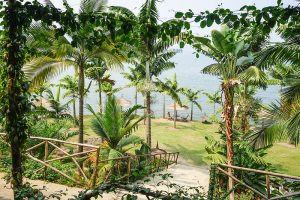Rwanda has become one of Africa’s leading destinations for primate tourism, offering travelers the rare chance to walk deep into ancient forests and observe wild chimpanzees up close. In 2026, chimpanzee tracking remains one of the country’s most exciting wildlife adventures, attracting visitors who seek authentic encounters in unspoiled natural environments. This experience combines physical activity, conservation, and education, giving people the opportunity to witness the daily behavior of our closest living relatives in their natural environment. Track Chimpanzees in Rwanda 2026
Chimpanzees share about 98% of their DNA with humans, and observing them in the wild offers insight into their intelligence, emotions, and complex social interactions. Rwanda’s well-protected national parks provide a safe habitat for several hundred chimpanzees, most of which live in Nyungwe Forest and Gishwati-Mukura National Parks. Tracking them involves a guided trek through thick vegetation, misty valleys, and towering canopies — a true immersion into Africa’s rainforest ecosystem. Track Chimpanzees in Rwanda 2026
What Is Chimpanzee Tracking in Rwanda?
Chimpanzee tracking in Rwanda refers to a guided forest hike in search of habituated chimpanzee families groups of chimpanzees that have gradually become accustomed to the presence of humans over many years. These troops are not tame, but they tolerate quiet, respectful observers for short periods. The activity allows visitors to spend up to one hour in close proximity to them once found.
During that time, travelers may see chimps swinging through the trees, grooming each other, or communicating using high-pitched calls and gestures. Their social structure is fascinating, often led by an alpha male who maintains authority through both dominance and cooperation. Every tracking session provides a unique experience because the chimpanzees move freely within their territory each day. Rangers locate them early in the morning before visitors arrive, ensuring a high chance of success.
Chimpanzee tracking in Rwanda also plays a crucial conservation role. Permit fees directly fund wildlife protection and help sustain local communities living near the forests. By participating, travelers contribute to preserving fragile habitats and supporting ecotourism initiatives that replace activities like logging or hunting.
Where Can You Track Chimpanzees in Rwanda?
Rwanda offers two main locations for chimpanzee tracking Nyungwe Forest National Park and Gishwati-Mukura National Park both in the country’s western region.
Nyungwe Forest National Park is the most famous and accessible chimpanzee tracking destination in Rwanda. Covering more than 1,000 square kilometers, Nyungwe is one of the oldest rainforests in Africa and forms part of the vast Congo Basin ecosystem. It is home to about 400 chimpanzees, split into several communities. Two of these groups are habituated for tourism — one in the main Nyungwe area (around Uwinka) and another in the smaller Cyamudongo Forest, a satellite section about an hour away.
Nyungwe’s dense canopy shelters a staggering diversity of life. In addition to chimpanzees, the park hosts more than a dozen other primate species, including L’Hoest’s monkeys, blue monkeys, grey-cheeked mangabeys, and Angola colobus monkeys. It also has over 300 bird species, hundreds of butterflies, and rare orchids, making it one of the most biodiverse places in East Africa.
Gishwati-Mukura National Park, although smaller and less visited, offers a quieter, off-the-beaten-path experience. It lies northwest of Nyungwe and is known for its recovering forest, which was restored after years of degradation. Gishwati-Mukura is home to a small chimpanzee population, along with golden monkeys and blue monkeys. Visitors looking for a peaceful, exclusive tracking experience may find this park ideal, although sightings are less predictable than in Nyungwe.
How Much Does Chimpanzee Tracking Cost in Rwanda in 2026?
Chimpanzee tracking permits are issued by the Rwanda Development Board (RDB), which oversees all national parks. The cost depends on your nationality or residency status. As of 2025, and expected to remain the same in 2026, the prices are:
- Foreign non-residents: USD150 per person
- Foreign residents: USD 100 per person
- East African citizens (including Rwandans): USD 25 per person
In addition to the permit, visitors must also pay the park entrance fee, which is charged per day:
- Foreign non-residents: USD 100 per person
- Foreign residents: USD 60 per person
- East African citizens: USD 10 per person
The total cost for a full chimpanzee tracking experience for an international visitor typically ranges between USD 150 and USD 250 per day, excluding accommodation and transport.
These fees include the services of an experienced guide and park rangers who lead each trek, ensuring safety and conservation compliance. Because permits are limited to small groups, early booking is essential — ideally two to three months before your visit, especially during the dry season when tourism peaks.
When Is the Best Time to Track Chimpanzees in Rwanda?
Rwanda’s tropical climate allows chimpanzee tracking year-round, but certain months provide better conditions.
The dry seasons, from June to September and December to February, are the most popular times to visit. During these months, trails are less muddy, visibility is higher, and forest access roads are in good condition. These conditions make hiking easier, and chimps are often seen more clearly as they move between trees and feeding areas.
The rainy seasons, from March to May and October to November, bring heavier rainfall and thicker vegetation. However, these months can also be rewarding because fruiting trees are abundant, drawing chimpanzees closer to feeding zones and making their locations more predictable. Travelers who visit during the wet months benefit from fewer crowds and discounted accommodation rates.
Ultimately, the best time to go depends on personal preference. If you prioritize comfort and accessibility, travel in the dry season. If you prefer solitude and lush scenery, the rainy months can offer a more intimate rainforest experience. Track Chimpanzees in Rwanda 2026
How Long Does Chimpanzee Tracking Take in Rwanda?
Chimpanzee tracking is typically a half-day activity, starting at dawn. Visitors gather at the park headquarters between 5:00 a.m. and 6:00 a.m. for a briefing on safety, behavior, and forest etiquette. Guides explain what to expect, proper conduct, and how to minimize environmental disturbance.
The trek’s duration depends on how far the chimpanzees have traveled overnight. Sometimes they are found within an hour; other times, tracking may take four to six hours. The hike can be strenuous, involving steep climbs, slippery paths, and dense vegetation. Once the chimpanzees are located, visitors are allowed to spend a maximum of one hour in their presence.
That hour is unforgettable. You might watch a mother grooming her infant, young chimps wrestling playfully, or the dominant male asserting his power with loud vocalizations. Rangers interpret behaviors, helping visitors understand chimpanzee communication and social hierarchy. The experience ends with a return trek to the starting point, where certificates are often issued to participants.
Who Can Participate in Chimpanzee Tracking?
Chimpanzee tracking in Rwanda is open to most adults with reasonable physical fitness. The minimum age for participation is 16 years. This rule exists to ensure the safety of both visitors and animals since young children may find the terrain or the duration too demanding.
Groups are deliberately kept small usually no more than eight people per chimpanzee group per session to limit disturbance and maintain a calm atmosphere in the forest. Visitors should be prepared for moderate physical exertion, as trails may involve hiking up and down slippery slopes or crossing streams.
Those with limited mobility can request support in advance, as some operators provide porters or walking sticks to make the experience more comfortable.
How Do You Book a Chimpanzee Tracking Permit in Rwanda?
Booking a chimpanzee tracking permit is straightforward. Travelers can either contact the Rwanda Development Board (RDB) directly or go through a licensed tour operator.
Booking through a tour operator is often the easiest choice, as they handle all logistics — securing the permit, arranging transport from Kigali, organizing accommodation, and providing guides. Because the number of permits per day is limited, it’s advisable to book at least two months in advance, especially if traveling in peak season.
Upon booking, you will need to provide your passport details and make payment in advance. Permits are non-transferable but can sometimes be rescheduled if weather conditions or travel delays occur.
What Should You Pack for Chimpanzee Tracking?
Chimpanzee tracking takes place in dense, humid rainforests, so packing correctly can make a significant difference in comfort and safety.
Wear long-sleeved shirts and trousers to protect your skin from insects and thorny plants. Choose neutral colors such as green, brown, or beige to blend with the forest environment. Good waterproof hiking boots are essential since trails can be slippery. Carry a rain jacket or poncho, as showers can occur unexpectedly even in the dry season.
A daypack should include drinking water, snacks, insect repellent, sunscreen, and a small first-aid kit. Gardening gloves are useful for gripping branches or vines during steep climbs. For photography, use a camera with a fast lens or a high ISO setting, as lighting is often low under the forest canopy. Flash photography is prohibited.
Always pack light, as you will be moving through uneven terrain for several hours.
Is Chimpanzee Tracking Safe in Rwanda?
Yes, chimpanzee tracking in Rwanda is considered very safe. All activities are conducted under the supervision of experienced rangers and guides trained in wildlife behavior and first aid. Visitors receive safety briefings before entering the forest.
Rules are in place to protect both chimpanzees and humans. Visitors must keep at least eight meters away from the animals, avoid loud noises, and never attempt to touch or feed them. If a chimpanzee approaches, guides instruct participants to remain calm and still.
Rwanda’s national parks are among the best-managed in Africa. Law enforcement and conservation patrols ensure that poaching and illegal logging remain minimal. The Rwanda Development Board maintains strict safety standards, making the experience well-organized and professional.
How Does Chimpanzee Tracking Compare to Gorilla Trekking?
Both activities are highlights of Rwandan tourism, but they differ in several ways. Gorilla trekking in Volcanoes National Park is generally more expensive — permits cost USD 1,500 per person — compared to the chimpanzee permit at USD 90. Gorillas are mostly ground-dwelling, moving slowly in small family groups, while chimpanzees are fast-moving, vocal, and often seen both on the ground and in trees.
Chimpanzee tracking tends to be more dynamic, requiring visitors to follow their sounds and movements through the forest. Gorilla trekking, in contrast, is often calmer and more focused on a single stationary group. Many visitors choose to combine both experiences, gaining a full perspective of Africa’s great apes and supporting conservation across multiple regions of Rwanda.
Can You Combine Chimpanzee Tracking with Other Activities in Rwanda?
Yes, Rwanda’s compact size allows travelers to combine multiple experiences within one trip. After tracking chimpanzees in Nyungwe, you can visit Volcanoes National Park for gorilla trekking or head to Akagera National Park for a classic safari experience with lions, elephants, and giraffes.
Within Nyungwe itself, visitors can enjoy the canopy walkway, a suspended bridge offering panoramic forest views, as well as waterfall hikes and birdwatching tours. The nearby Gisakura Tea Estate also provides cultural and agricultural experiences where visitors can learn about tea production. Track Chimpanzees in Rwanda 2026
For relaxation, many travelers visit Lake Kivu, located between Nyungwe and Volcanoes National Park. Its beaches, islands, and resorts offer a peaceful contrast to the energy of forest trekking.
What Are the Chances of Seeing Chimpanzees in Rwanda?
Chimpanzee sightings in Nyungwe are very likely but not absolutely guaranteed. On average, visitors have about an 85–90% success rate. Experienced trackers go ahead each morning to locate the chimps before visitors begin the hike. The sound of their loud calls and drumming on tree trunks often leads guides directly to them. Track Chimpanzees in Rwanda 2026
Success rates are highest during the dry season when chimps move in larger groups and trails are easier to follow. Even on days when chimps are harder to spot, the hike itself offers a rich experience, with opportunities to see other primates, birds, and scenic forest landscapes.
Final Travel Tips for Chimpanzee Tracking in 2026
- Book early: Permits are limited and sell out quickly.
- Start early in the morning: Chimpanzees are most active at dawn.
- Carry essentials: Water, snacks, and rain gear are crucial.
- Stay quiet: Sound travels far in the forest; silence improves chances of sightings.
- Be patient: Wildlife encounters are unpredictable but rewarding.
- Respect conservation rules: Maintain distance, follow guides, and leave no trace.
Conclusion
Chimpanzee tracking in Rwanda in 2026 promises an unforgettable journey through ancient forests alive with sound, color, and life. Nyungwe Forest National Park stands as one of Africa’s finest locations for this experience — a place where conservation success meets adventure tourism. With affordable permits, exceptional biodiversity, and safe, organized operations, Rwanda offers one of the best chances in the world to observe chimpanzees in their natural habitat. Track Chimpanzees in Rwanda 2026
Whether you combine it with gorilla trekking, birdwatching, or cultural tours, chimpanzee tracking in Rwanda is an experience that leaves lasting impressions — a rare opportunity to witness the behavior of our evolutionary cousins in a pristine, thriving ecosystem.
